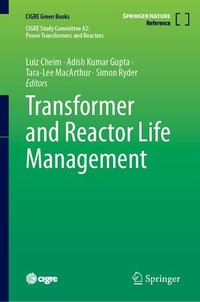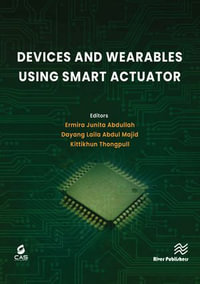
eTEXT
Advanced Controls for Wind Driven Doubly Fed Induction Generators
By: Mahmoud K. Abdelhamid, Mahmoud A. Mossa, Ahmed A. Hassan
eText | 22 December 2023 | Edition Number 1
At a Glance
eText
$260.70
or
Instant online reading in your Booktopia eTextbook Library *
Read online on
Desktop
Tablet
Mobile
Not downloadable to your eReader or an app
Why choose an eTextbook?
Instant Access *
Purchase and read your book immediately
Read Aloud
Listen and follow along as Bookshelf reads to you
Study Tools
Built-in study tools like highlights and more
* eTextbooks are not downloadable to your eReader or an app and can be accessed via web browsers only. You must be connected to the internet and have no technical issues with your device or browser that could prevent the eTextbook from operating.
ISBN: 9781003832157
ISBN-10: 1003832156
Published: 22nd December 2023
Format: ePUB
Language: English
Publisher: Taylor & Francis
Edition Number: 1
You Can Find This eBook In
Non-FictionEarth Sciences, Geography, Environment, PlanningThe EnvironmentEngineering & TechnologyEnergy Technology & EngineeringAlternative & Renewable Energy Sources & TechnologyEnvironmental ScienceElectrical EngineeringPower Generation & DistributionElectronics & Communications EngineeringElectronics EngineeringAutomatic Control Engineering
This product is categorised by
- Non-FictionEarth Sciences, Geography, Environment, PlanningThe Environment
- Non-FictionEngineering & TechnologyEnergy Technology & EngineeringAlternative & Renewable Energy Sources & Technology
- Non-FictionEngineering & TechnologyEnvironmental Science
- Non-FictionEngineering & TechnologyEnergy Technology & EngineeringElectrical EngineeringPower Generation & Distribution
- Non-FictionEngineering & TechnologyElectronics & Communications EngineeringElectronics EngineeringAutomatic Control Engineering
- Non-FictionSciencePhysicsClassical MathematicsEnergy
- Non-FictionEngineering & TechnologyCivil Engineering
- Non-FictionEngineering & TechnologyEnergy Technology & EngineeringElectrical Engineering























